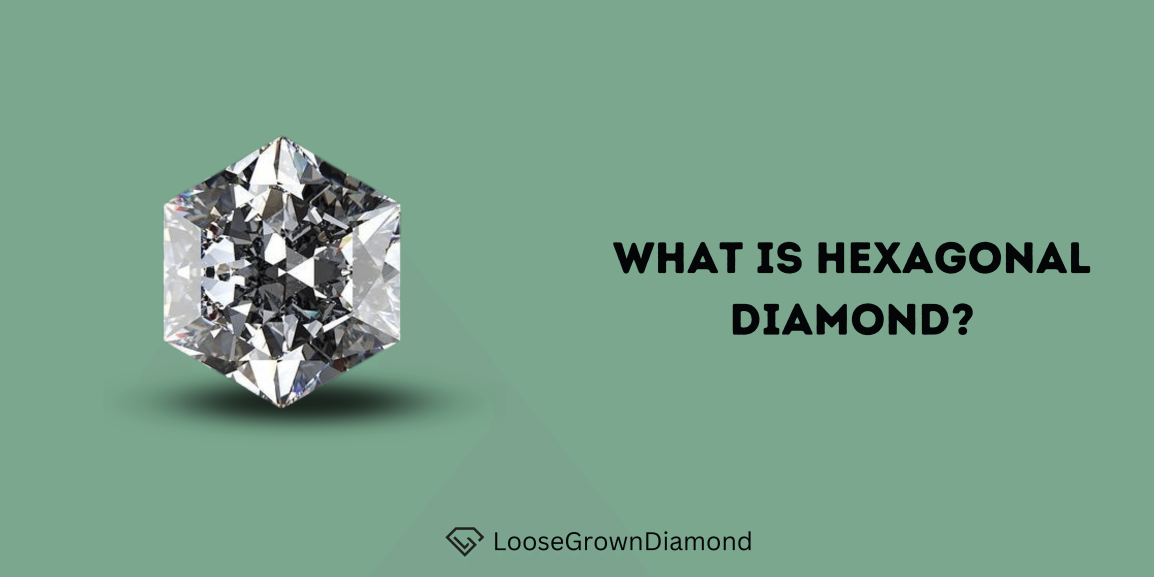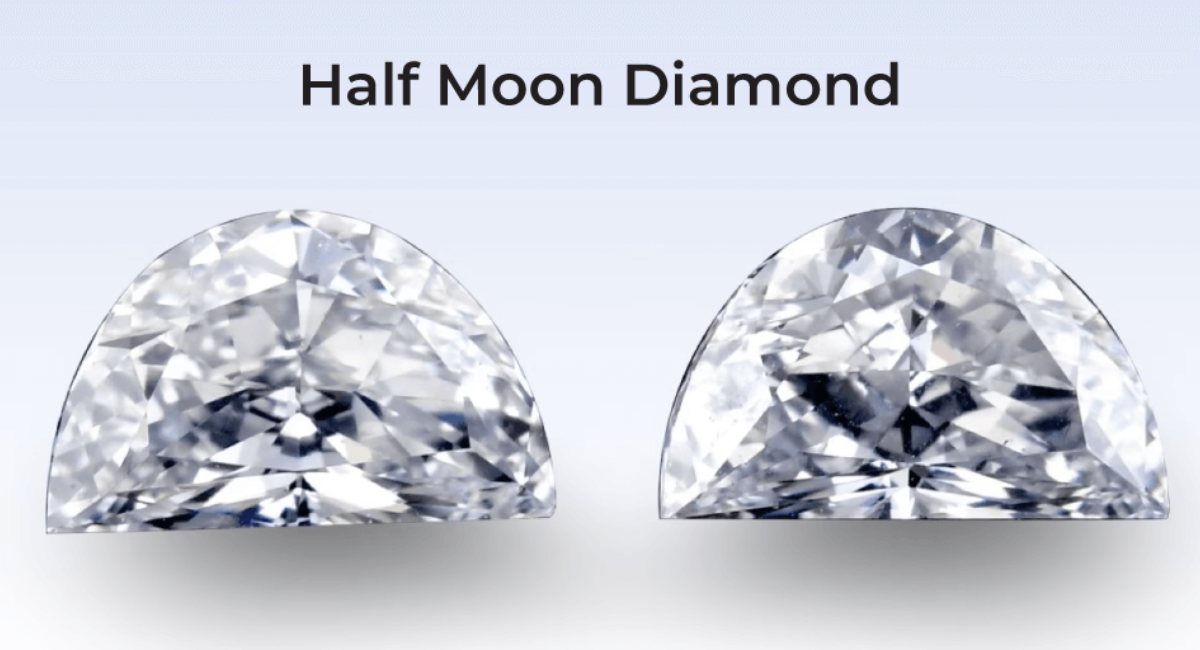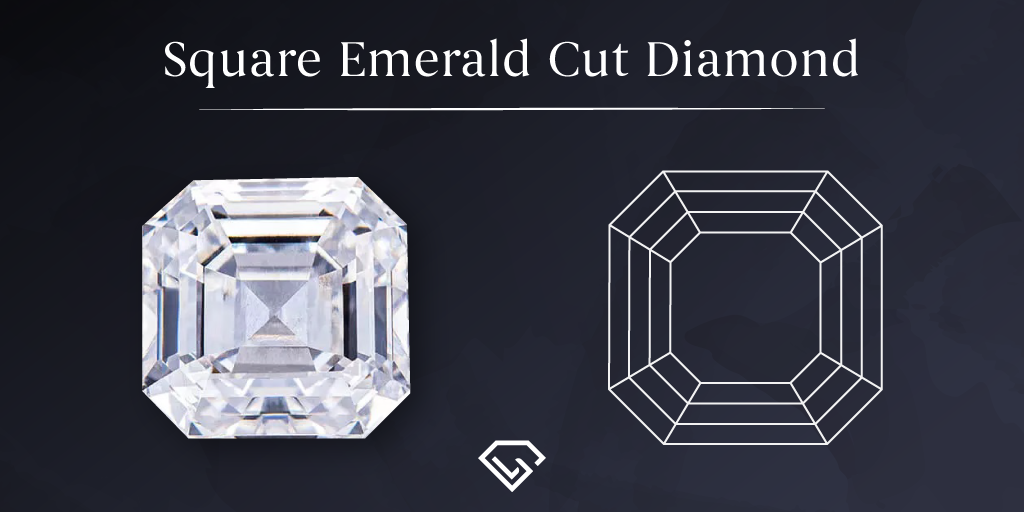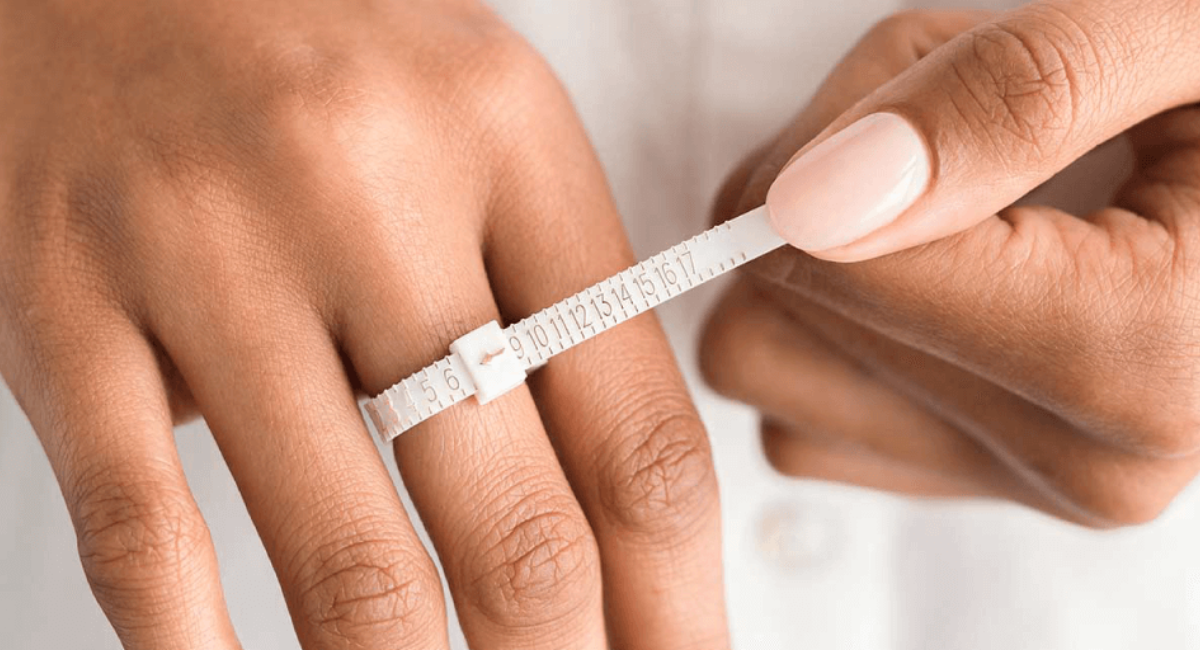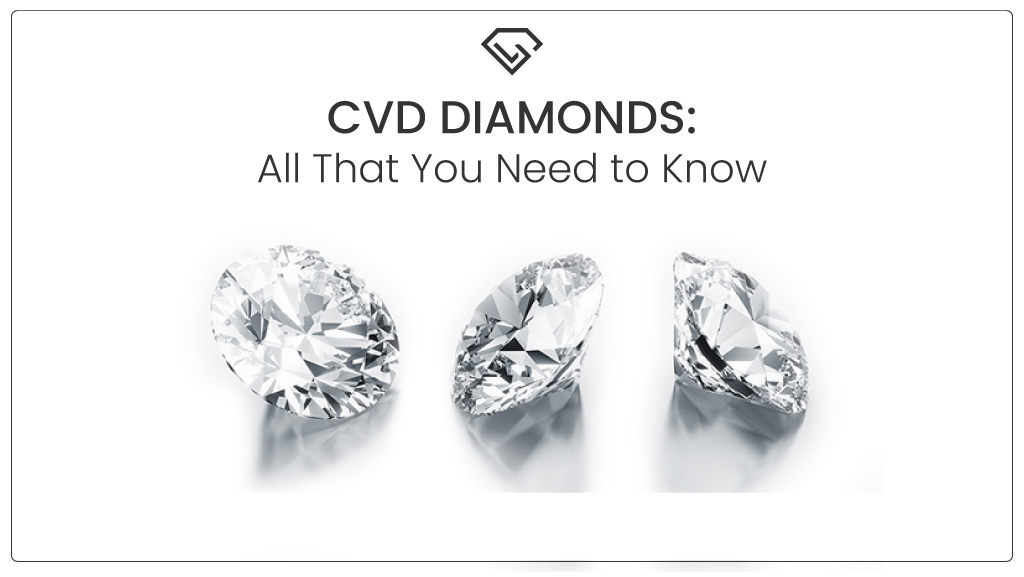Diamond Clarity Scale: Find out What Makes a Diamond Truly Exceptional
Diamond clarity is something significant while picking out a ring, however, we tend to focus on several things and then on this, and at times, we tend to forget about it too. That’s also because we aren’t trained professionals choosing rings.
However, now that you’re here let us tell you it is vital for you to check out the diamond clarity grade for sure. As the carats and shape are important, checking the lab grown diamond clarity chart is equally important, and it profoundly impacts the price of your ring.
While checking out the diamond clarity, there are quite a few technicalities, and we shall guide you through the same. Let’s answer your questions one by one.
What Is Diamond Clarity?
Diamond clarity refers to how pure and rare a stone truly is. On the diamond clarity chart, the purity is checked of the diamond.
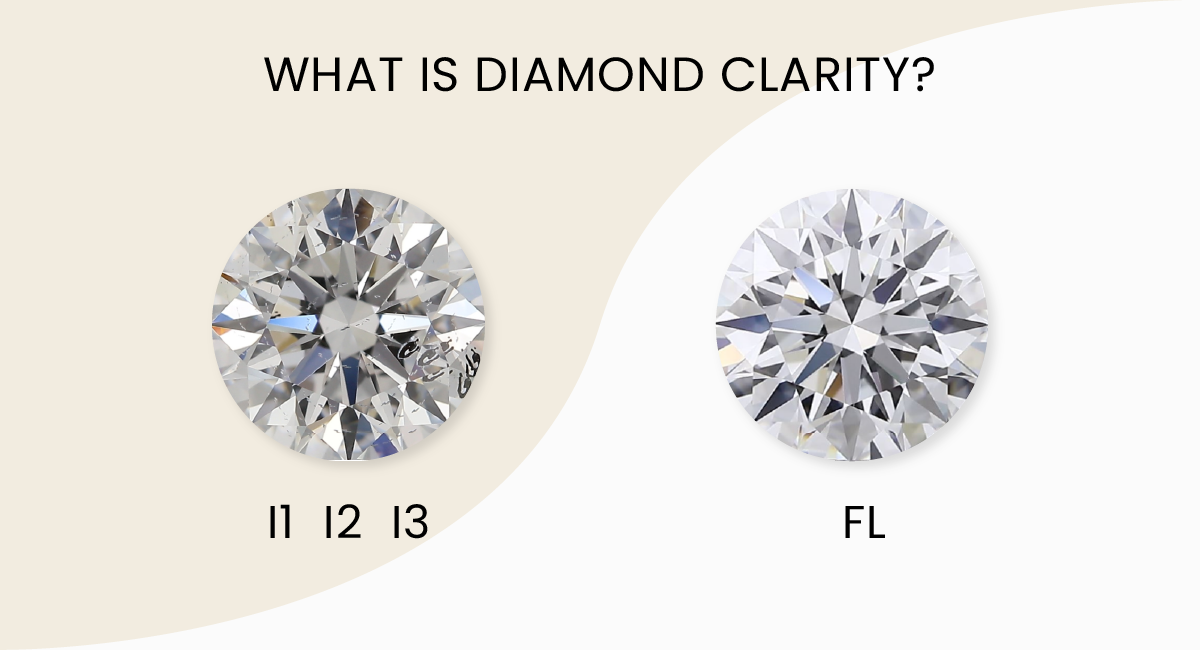
This is done when forming the diamond microscopic natural elements that can be trapped in the diamond. These are checked by professionals, who use specialized gadgets and a qualitative grading system to go ahead and assign the numerical value of clarity to the diamond.
Now, of course, a higher quality grade is something that is preferred because the lower the number of flaws, the more clarity the grade of the diamond.
Beyond all, let’s understand that you’ll rarely find an utterly pure diamond. But the diamond with a lower number of inclusions is something that is preferred as it appears to be more beautiful. It is just that as pure as it is, the more apparent it gets. Also, diamonds with minimal or no inclusions are priced at a higher rate, though most inclusions are not visible to the naked eye.
What Is the Diamond Clarity Scale?
The diamond clarity scale is the same scale that helps us grade how pure the diamond is. The diamond clarity scale is universal, and it was established by the Gemological Institute of America (GIA).
This clarity scale is used to set prices of the same. Of course, a flawless diamond would be priced exceptionally higher than a diamond with multiple inclusions. But let us remind you that microscopic inclusions are hardly visible to the naked eye.
How are Clarity Grades Determined?
The diamond clarity grading is determined by testing the size, type, quantity of diamond, and most importantly, where the inclusion is on the stone and how that impacts the look. All of these things together determine the grading.
If you have a professional who has been in the diamond market for a substantial time, they will use very fine magnification to classify the same.
Further on to conclude how pure your diamond is, the gemologist or so to say the professional maps these attributes of the diamond on the “diamond plot.” Known labs such as the GIA make the distribution of diamonds on the scale of “Included” to “Flawless.”
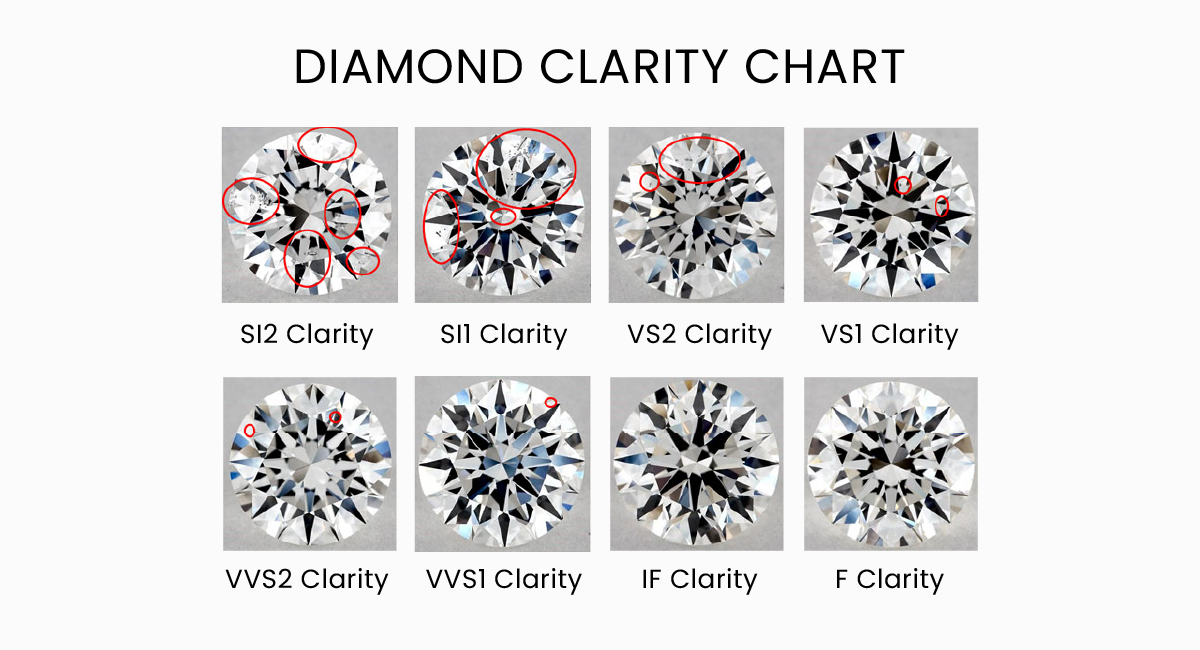
Clarity helps us understand the number of inclusions and blemishes within a diamond. Among the 4Cs, clarity is a vital feature to pay attention to while buying a diamond.
The clarity of a diamond is measured based on 5 factors:
- Size: The bigger the inclusion, the more quickly it will be visible to the naked eye. Also, if you choose large diamonds, the inclusion flaws can be seen easily on amplification, and due to this, the diamond will be placed in a low clarity grade.
- Position: Inclusions present near the pavilion or facet will be less clearly visible than those present under the table. The image will often reflect, and the diamond will not look pretty. A reflector term is given to this inclusion.
- The Nature of Inclusion: This plays a role in deciding the clarity grade, as internal inclusion permanently excludes it from higher grades like FL. An expert jeweler can alter it if it is on the outside or if there is a blemish.
- Color: A color inclusion can be easily seen, like brown, yellow, and black. This, in turn, changes the color of a diamond in some way, and thus a lower grade is given.
- The Number of Inclusions: The higher the number of inclusions, the lower the clarity grade. The lower the number of inclusions, the higher the clarity grade.
Many people see this as a flaw, but they forget that the features of the diamond come from nature itself or how they were manufactured.
Because of these birthmarks, every diamond looks unique in its own way. The irregularities inside the diamond are called inclusions, whereas the ones outside are called blemishes.
Inclusions are mainly responsible for clarity, but other factors can also determine clarity.
Experts use a microscope with a magnification of 10x or more to determine a diamond’s transparency by viewing the diamond face up. They analyze the internal characteristics of the diamond based on the five grading factors mentioned above.
GIA introduced a diamond clarity scale to help people choose the best diamond clarity for themselves. The GIA Color Grading Scale consists of 11 grades, of which most diamonds fall under the SI (slightly included) and VS (very slightly included) grades.
GIA Clarity Grade Scale:
- Flawless Grade (FL): According to a skilled diamond expert, there is no sign of any blemishes or inclusion flaws. Under 10x magnification, only minor flaws are visible.
- Internally Flawless (IF): As the name says, there is no internal inclusion flaw visible under 10x magnification, but a skilled diamond grader can see external blemishes.
- Very, Very Slightly Included (VVS1, VVS2): There is no visible inclusion or blemishes with the naked eye. When seen under 10x magnification by a skilled grader, finding the flaws is difficult but not impossible.
- Very Slightly Included (VS1, VS2): This diamond has a little inclusion and blemishes. It can be seen by an expert diamond grader, ranging from difficult to a little easier to see under 10x magnification.
- Slightly Included (SI1, SI2): in this diamond, an expert can see the inclusion flaws and blemishes easily under 10x magnification.
- Included (I1, I2, I3): the flaws of a diamond can be easily seen under a 10x microscope and sometimes by the naked eye.
Shape
Carat
Cut
Color
Clarity
Price
round
1.42
Ideal
F
VVS2
$625 $481
View
emerald
1.87
Ideal
D
VS1
$1051 $751
View
emerald
1.04
Ideal
D
VS1
$391 $279
View
emerald
1.03
Ideal
E
VS2
$399 $285
View
emerald
1.01
Ideal
E
VS1
$402 $287
View
emerald
1.18
Ideal
E
VS2
$447 $319
View
emerald
1.24
Ideal
D
VVS1
$477 $341
View
emerald
1.06
Ideal
E
VS2
$409 $292
View
emerald
1.19
Ideal
E
VVS1
$500 $357
View
emerald
1.15
Ideal
D
VS1
$424 $303
View
emerald
1.42
Ideal
E
VS1
$550 $393
View
emerald
1.21
Ideal
D
VS1
$473 $338
View
emerald
1.14
Ideal
E
VVS1
$483 $345
View
round
1.16
Ideal
F
VVS2
$482 $371
View
round
1.20
Ideal
E
VS1
$476 $366
View
round
1.17
Ideal
E
VVS2
$593 $456
View
round
1.05
Ideal
E
VS1
$425 $327
View
round
1.27
Excellent
D
VVS2
$524 $403
View
round
1.31
Excellent
E
VVS2
$533 $410
View
round
1.28
Excellent
F
VVS2
$528 $406
View
How Important Is Diamond Clarity?
The importance of the diamond clarity is the shine it would cast when you wear it. The shine would be higher for the diamond with minor inclusion and vice-versa. Hence, choose your clarity level basis on your budget and obviously on the style that best suits you.
Keep this in mind the closer it gets to flawless, the clearer it is. We would also like you to note that the clarity of the diamond is affected by the other attributes of the diamond, like its shape and size. For instance, any step-cut diamond due to cut makes each attribute very visible. However, on the other hand, a larger-carat diamond would not happen because of the large facets it has.
Which Diamond Clarity Is Best?
Which clarity grade is the best is clearly for you to choose? The craze for flawless or internally included inclusion shouldn’t be followed merely because of how expensive it gets.
When you’re choosing a diamond ring, make sure to choose a ring with “Very Slightly Included” (VS1 or VS2), Very Very Slightly Included (VVS1 or VVS2), or slightly included diamond (SI1) range in the diamond clarity scale. Also, you can check, our guide on the difference between VVS & VS.
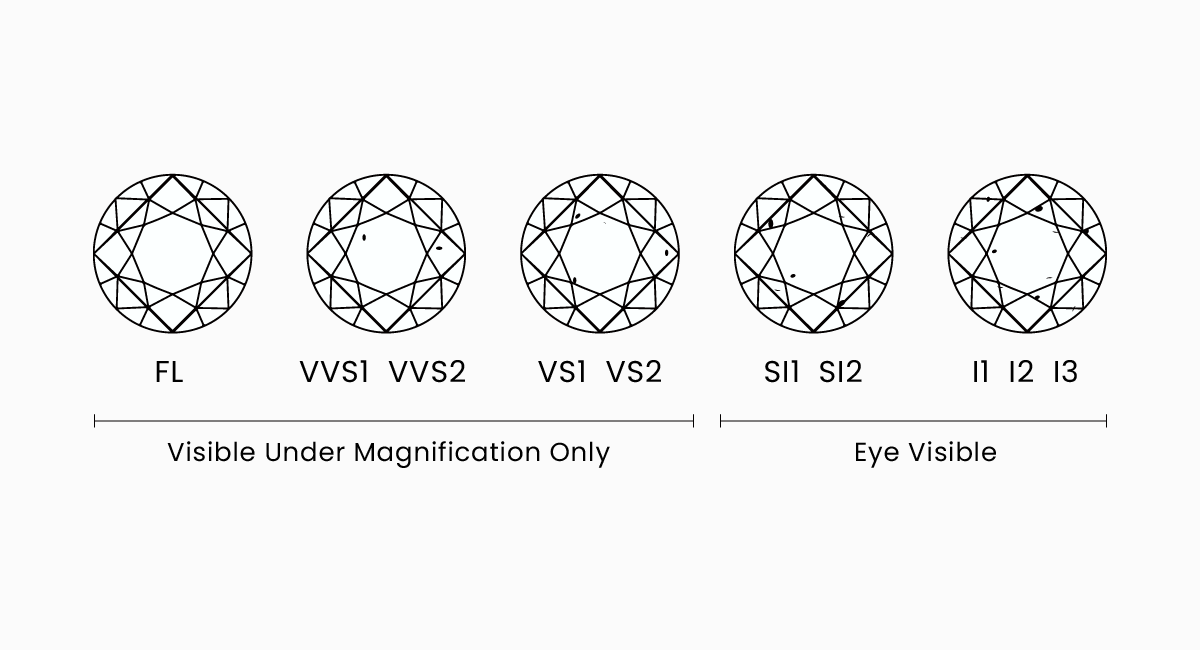
These are good choices in the clarity range because again, the inclusions are rarely visible to the naked eye, and they have significant shine whatsoever. If you choose a diamond on this range of the GIA diamond clarity scale, you can always have a higher-carat diamond and save a pound too.
How Does Diamond Clarity Affect the Price?
The higher up on the diamond clarity grade(diamond clarity scale) you go, the higher the price you pay. That is how the pricing is affected by the clarity of the lab diamond, so you can make the decision accordingly.
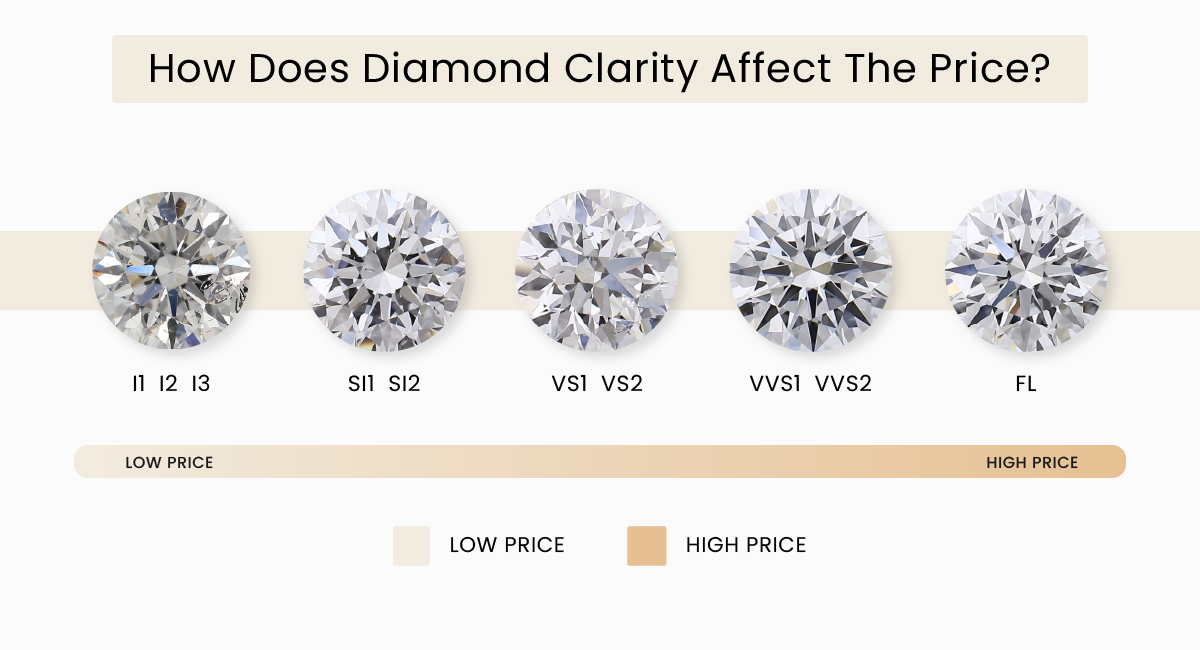
A variance of 15-25 percent can be seen in prices as you move in the lab diamond clarity scale grade amongst diamonds, and as you move around the same scale grade, there can be a 5-15 percent price variance too.
Diamonds with lower clarity grades may have inclusions or blemishes that are visible to the naked eye. The more noticeable these imperfections are, the lower the diamond’s price. Buyers often prefer diamonds with fewer or less visible flaws, as these diamonds are considered more visually appealing.
Frequently Asked Questions
What affects the clarity of the diamond?
Multiple factors affect a diamond’s clarity, from any kind of inclusion to trapped microscopic elements naturally present in the diamond. The clarity is judged by analyzing the inclusion’s size, color, type, and how many are present.
What are the different types of diamond inclusion?
Diamond inclusions can either be external or internal. More so, the types of inclusions found in diamonds are feathers, clouds, and crystals commonly.
Why are diamond inclusions caused?
Inclusions found in diamonds are usually natural, and the reason behind their development is the pressure faced by the raw diamond as it forms in the earth’s crust.
How to measure diamond clarity?
The way to measure diamond clarity is done by checking them on the GIA diamond clarity chart, which goes as- Included, Slightly Included (SI1 and SI2), Very Slightly Included (VS1 and VS2), Very Very Slightly Included (VVS1 and VVS2), Internally Flawless to Flawless. Each clarity rating indicates a range, inclusions in two diamonds of the same clarity grade may differ.
What is good diamond clarity?
A good diamond clarity is typically in the Very Slightly Included (VS) range, such as VS1 or VS2, where inclusions are not easily visible to the naked eye.
What is the best diamond clarity?
The best diamond lab clarity is Flawless (FL), with no visible inclusions or blemishes even under 10x magnification.

